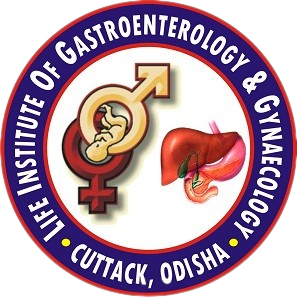The gallbladder is a small organ located under the liver, playing a vital role in digestion. It stores bile, a fluid that helps break down fats. Gallbladder cancer is a disease where cells in the gallbladder grow out of control. While it is not very common, it can have severe impacts, especially in India where it’s more prevalent. Globally, it is less frequent but still significant in some regions. Awareness and early detection are crucial since gallbladder cancer often goes unnoticed until it’s advanced. By understanding this condition and its warning signs, people can seek timely treatment and potentially improve outcomes.
Understanding Gallbladder Cancer
What is Gallbladder Cancer?
Gallbladder cancer is a part of a group of cancers known as biliary tract cancers. It means the cancer starts in the lining or other tissues of the gallbladder. There are different types, such as adenocarcinomas, which are the most common. Knowing about gallbladder cancer and its types is important for taking preventive measures.
Understanding the nature of this cancer helps in its early detection. By identifying potential issues early on, patients can work with healthcare providers to consider various gallbladder cancer treatment options. Early knowledge empowers individuals to make informed health decisions.
Prevalence and Statistics
In India, gallbladder cancer incidence rates are higher as compared to many other global regions. Women in India are particularly at risk, with some studies showing a notable gender difference in the incidence of this cancer. The reasons why gallbladder cancer is more common in certain areas can be due to factors like lifestyle, genetic background, and environmental influences.
Globally, it is less common in Western countries but still a concern in areas like South America and Eastern Europe. People in specific geographic locations seem to face higher risks, suggesting that environment and diet can play roles in the prevalence of this cancer.
Recognizing Symptoms of Gallbladder Cancer
It’s crucial to recognize the early signs of this illness. Gallbladder cancer symptoms can start quietly. Early symptoms of gallbladder cancer include:
- Persistent abdominal pain
- Jaundice, which is a yellowing of the skin or eyes
As the disease progresses, more serious gallbladder cancer symptoms may appear, such as:
- Unexplained weight loss
- A swollen abdomen
Seeking medical advice upon noticing these early indicators is vital. Even if these symptoms seem mild, it’s better to consult a healthcare provider. Early discussions can lead to timely intervention and more treatment choices.
Risk Factors and Prevention
Risk Factors
Several gallbladder cancer risk factors heighten a person’s likelihood of developing this cancer:
- Gallstones, which are pebble-like materials in the gallbladder.
- Obesity, increasing the body’s stress and possibly leading to gallstones.
- Gender influences, as women have a higher predisposition.
- Genetic factors can play a part, especially among certain populations like those in India.
Lifestyle Modifications
Preventive strategies can help minimize these risks. Some suggestions include:
- Maintaining a healthy diet rich in fruits and vegetables.
- Keeping a regular exercise routine to manage weight and reduce obesity risks.
- Undergoing regular health screenings for early detection.
- Reducing stress through relaxation techniques and adequate rest.
These changes not only lower the chance of developing gallbladder cancer but also enhance overall well-being.
Diagnostic Processes for Gallbladder Cancer
To diagnose gallbladder cancer, doctors begin with a clinical assessment. This includes reviewing medical history and conducting physical checks. Imaging tests like ultrasounds are essential in this early assessment.
For a more thorough gallbladder cancer diagnosis process, additional tools are used: – MRI scans or EUS (endoscopic ultrasound) provide detailed images. – A biopsy, where tissue samples are examined under a microscope, may be conducted for confirmation.
Understanding diagnostic results can be confusing, but healthcare professionals guide patients through interpretation. For unclear or inconclusive results, more tests might be required. It’s crucial to discuss all available treatment options and next steps following a diagnosis.
Conclusion
Recognizing symptoms, understanding risk factors, and familiarizing oneself with the diagnostic journey are key steps for managing gallbladder cancer effectively. Early detection can significantly improve treatment outcomes. By consulting healthcare professionals regularly, individuals can take proactive steps against this cancer. Community education and awareness are invaluable tools in the fight against gallbladder cancer.
For expert care and guidance, consider consulting with Ligg Hospital to ensure early detection and the best possible treatment options.

